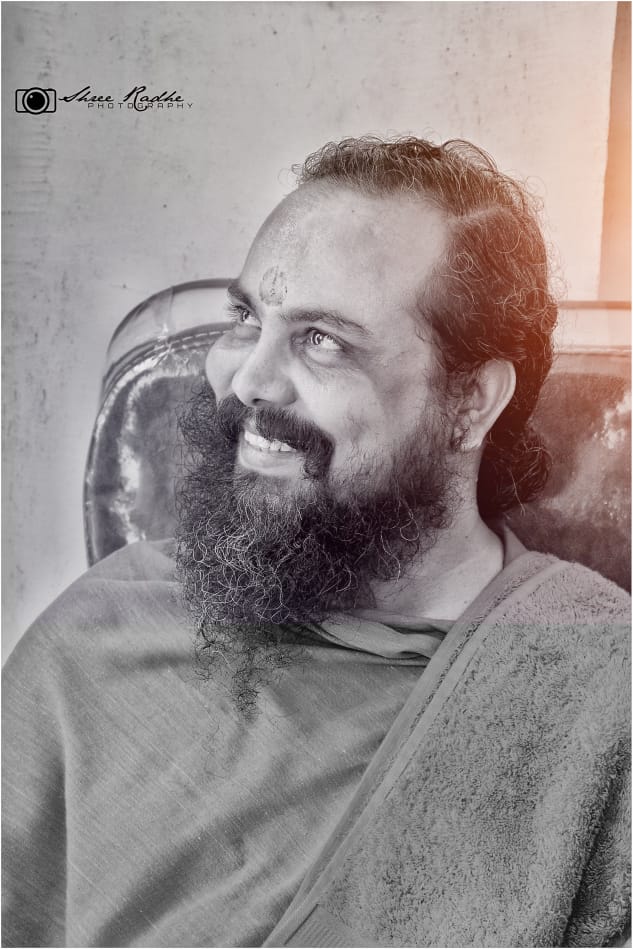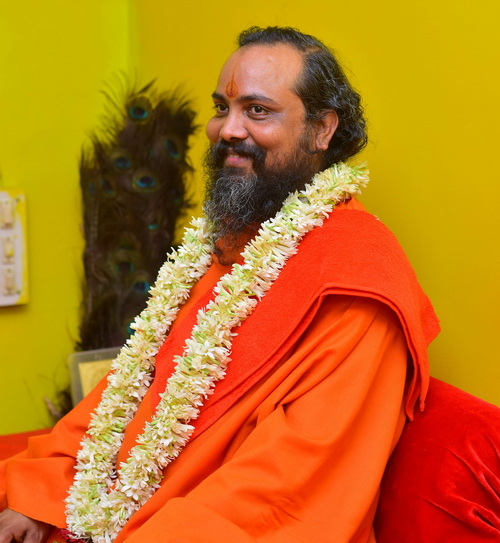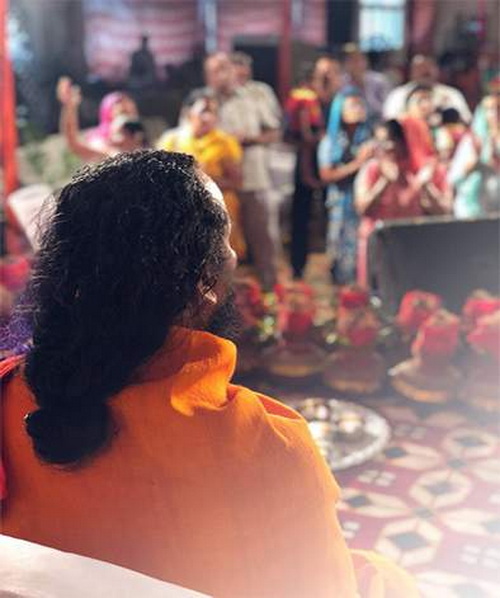

Sri Paramahamsa Swami Sandipendra Ji is a famous ascetic, Hindu philosopher, preacher, and environmentalist. He is a graduate in Sanskrit, and also is the founder of Swami Sandipendra Sanskrit Vidya Parishad. Swami Ji is the chief patron of the Ramayana Research Council.
He is also called Acharya Paramahamsa by his Devotees. Acharya Paramahamsa refers to the oldest and largest order of revered monks in India. Swami Ji started the initiative and is also the first guru of the Siddha Peeth Mother Baglamukhi temple. He is a believer of the sermon tradition and speaks in detail about all progressive practices in the 21st century. He believes that there should be no stagnation in the religious beliefs of the people.
Born and raised in a respected family of the city, Swami Ji decided to become a monk at the very little age of 17. He studied and learned the Vedas and the scriptures from his Guru, Swami Shri Paramahamsa Garunadhwajacharya Ji Maharaj. He practiced and mastered the art of yoga under his guidance. In the year 1985, Swamiji returned to the Himalayas after his years-long meditation and learning. He then met his guru and took renunciation (from all the materialistic things in the world) from him.
WHAT'S NEW
Ramayana Research Council
The Ramayana Research Council is a registered institution in the form of trust which has been continuously working with the commitment to spread the Human Welfare Messages of Prabhu Shriram as well as Research works on Ramayana & ShriRamcharitManas to the Mass. A group of 21 saints have been involved in the said Research works. The Council is writing a Deepest Researched Book ever (of 1108 Pages & in 10 International Languages apart from Hindi) on Shriram Mandir (Ayodhya) Struggle. We’ve been promoting ‘Digital Ramleela Manchan’ Time & Again. We are soon constructing a ‘Ram Darbar’ which will give us more strength to our campaign.
The Ramayana is an epic poem that was first written from memory (smriti) by sage Valmiki in the Sanskrit language. Many years later, Goswami Tulsidas, born in the 16th century, wrote the Ramcharitamanas (a different version of the Ramayana written in Avadhi Hindi), which is the scripture used as a basis by Morari Bapu in his kathas. Through Asia, the Ramayana has served not only as poetry, but as the ideal of life and embodiment of principles, as the basis for festivals, plays, and rituals, as the foundation for religion, and as an eternal tale of love and duty. The Ramcharitmanasa is broken up into stanzas called chaupais, passages of which are interposed with dohas or couplets. It is filled with exquisite poetry and consists of seven chapters: Bal Kand, Ayodhya Kand, Aranya Kand, Kiskindha Kand, Sundar Kand, Lanka Kand, and Uttar Kand. All these sections cover the different periods of Lord Rama’s life, taking us right from his boyhood, through his exile and his life in the forest, to the abduction of Sita, the war which follows in Lanka, and finally, what happens after the recovery of his wife. Preceding these seven sections, the story of Lord Shiva has also been narrated in the form of a prologue to Ram’s story.















Daily Video Clips
BEST SPEECH ON RELIGIOUS LIFE
On the other hand, we denounce with righteous indignation and dislike men who are so beguiled and demoralized by the charms of pleasure of the moment.
On the other hand, we denounce with righteous indignation and dislike men who are so beguiled and demoralized by the charms of pleasure of the moment.
Swami Sandipendra Sanskrit Vidya Parishad Foundation is an NGO that has been actively contributing to various cultural and social initiatives since 2006. The trust also has an old age home and Hermitage center running in Nalkheda

Swami Sandipendra Sanskrit Vidhya Parishad is the fruit of the devoted efforts of Swami Sandipendra Ji Maharaj. It has been founded and directed by him. It is dedicated to promoting the spirit of service of humanity, studies of scriptures, and Satsang. The trust is primarily engaged in spiritual pursuits and also in its spiritual life, the accent is on social content and changes. Selfless service to mankind is the rule followed here. The Sangh works for the people who are destitute, uneducated, those suffering deprivation. It has made its mission to rehabilitate the destitute, to feed the hungry, and to help the poor. The Sangh holds spiritual discourse regularly to inculcate the right values, control over evil thoughts, proper control of mind, and positive celibacy.
Swami Ji’s Trust also runs an educational project in Maa Baglamukhi Parishad. The trust also actively participates in the propagation of various public awareness programs like the Swachh Sarvekshan project in Madhya Pradesh. Swami Ji has himself actively taken part in the Mission. He also supports the Plantation Mission and Save Ganga Movement.
He believes that India is a country with diversity and culture and the mission must be supported for India’s Development. The culture and diversity in India are different from other countries. Like other festivals are of special importance in our country, in the same way, different rivers have a major place and importance.
He also believes of all those rivers, the Ganges River is the most sacred and prominent in India. Ganges River It is the longest river in India. All people of the Hindu religion consider this river to be revered. Thus, keeping it clean is the responsibility of all.

